Welcome to the
WalkMe Help Center
Please log in to continue

Please log in to continue

Experience streamlined system management with WalkMe's unified tool in the Admin Center. It gives you a unified management tool in the Admin Center that centralizes all essential system settings in a single location, providing a user-friendly experience and a simplified interface for effective system management.
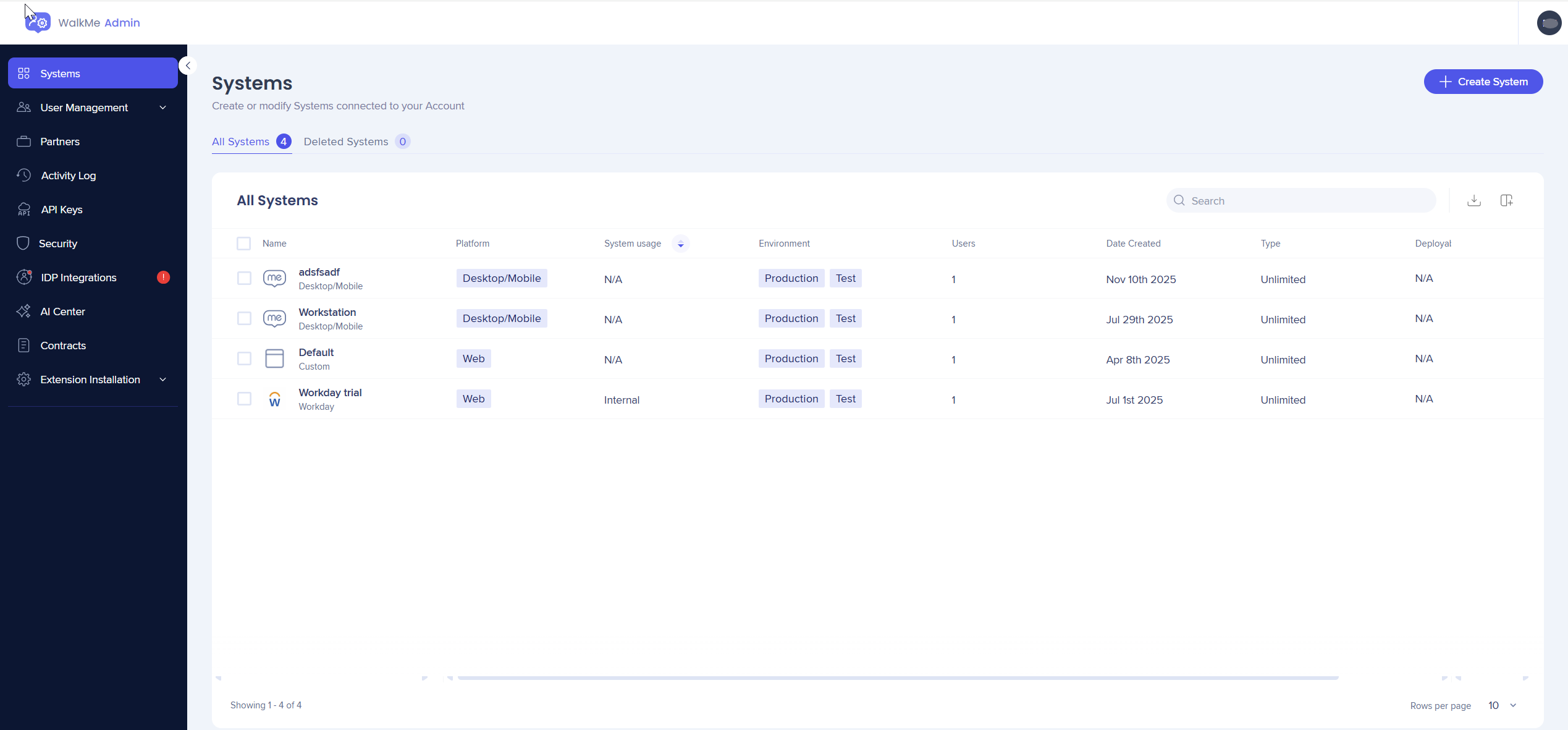
How to Access
To access the system management settings, you need to open the Systems page in the WalkMe Admin Center and then select the system you want to manage.
In the Systems page, you can see information about all your systems.
Select the Options menu next to a system to:
Change system type: Convert your system into another known type
Systems with applied settings cannot be converted
If your system has content built on it already, items attached to certain elements may not function correctly on the new system type
Add mobile web: Add a mobile web system to this web system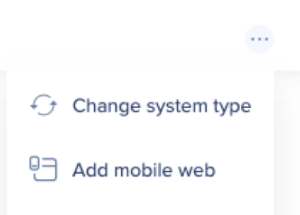
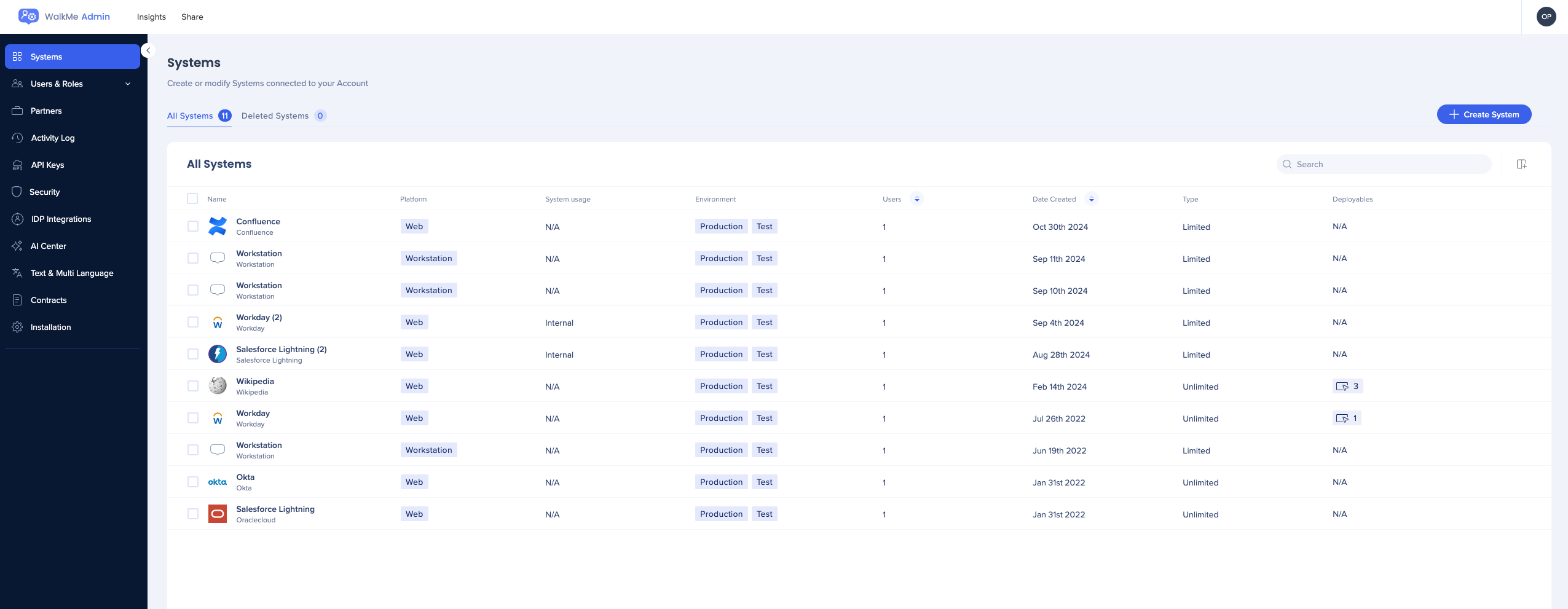
Once you select a system from the Systems page you will be able to manage all of its settings and 7 tabs will be available:
Environments
Extension
System Users
Multi-language
Data Settings
Accessibility
Building Settings
Continue reading to learn more about the functionalities available in each tab.
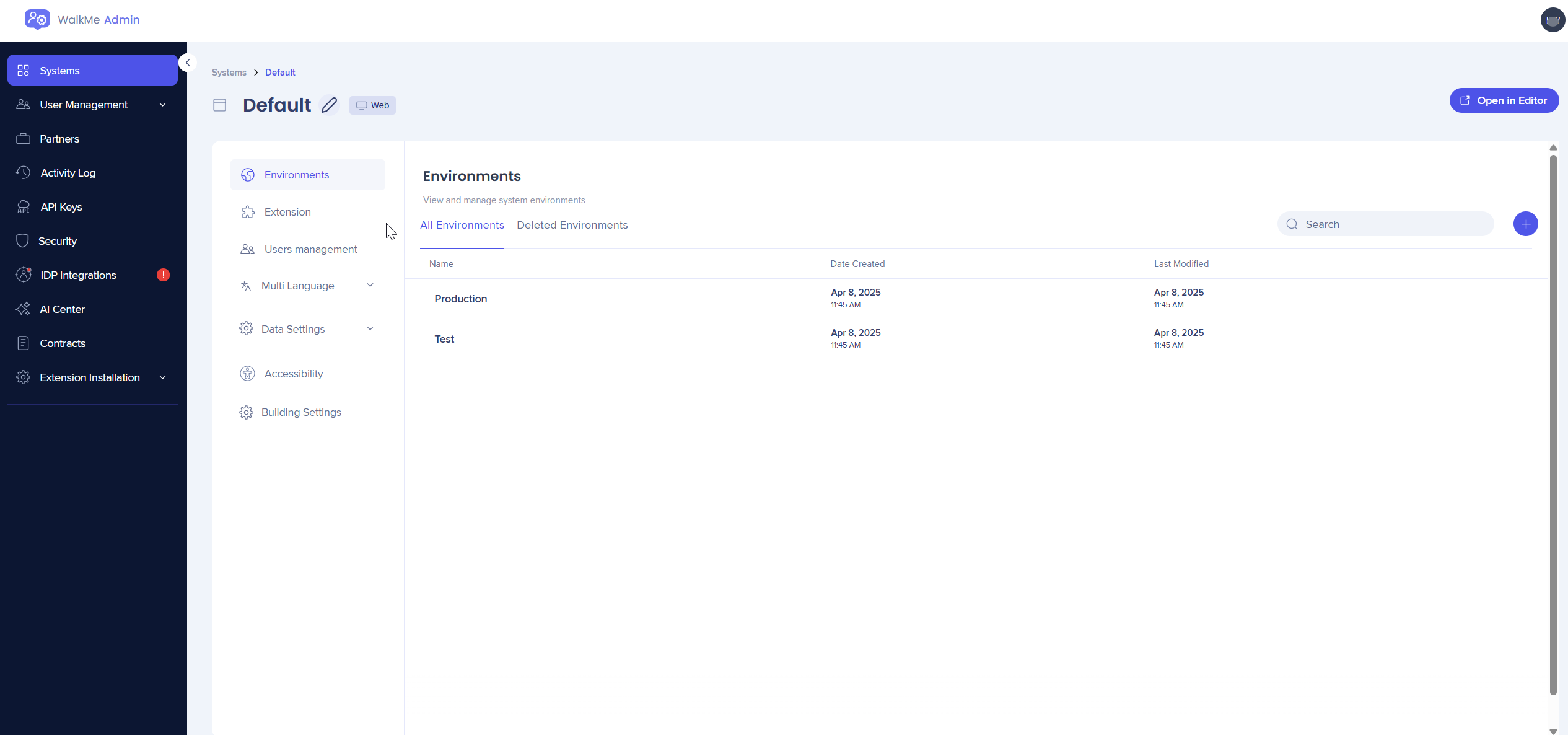
In the Environment tab, you can manage all aspects related to your system environment.
Default "Production" and "Test" environments are automatically generated during system creation. These two environments are immutable, meaning they cannot be altered (renamed or deleted).
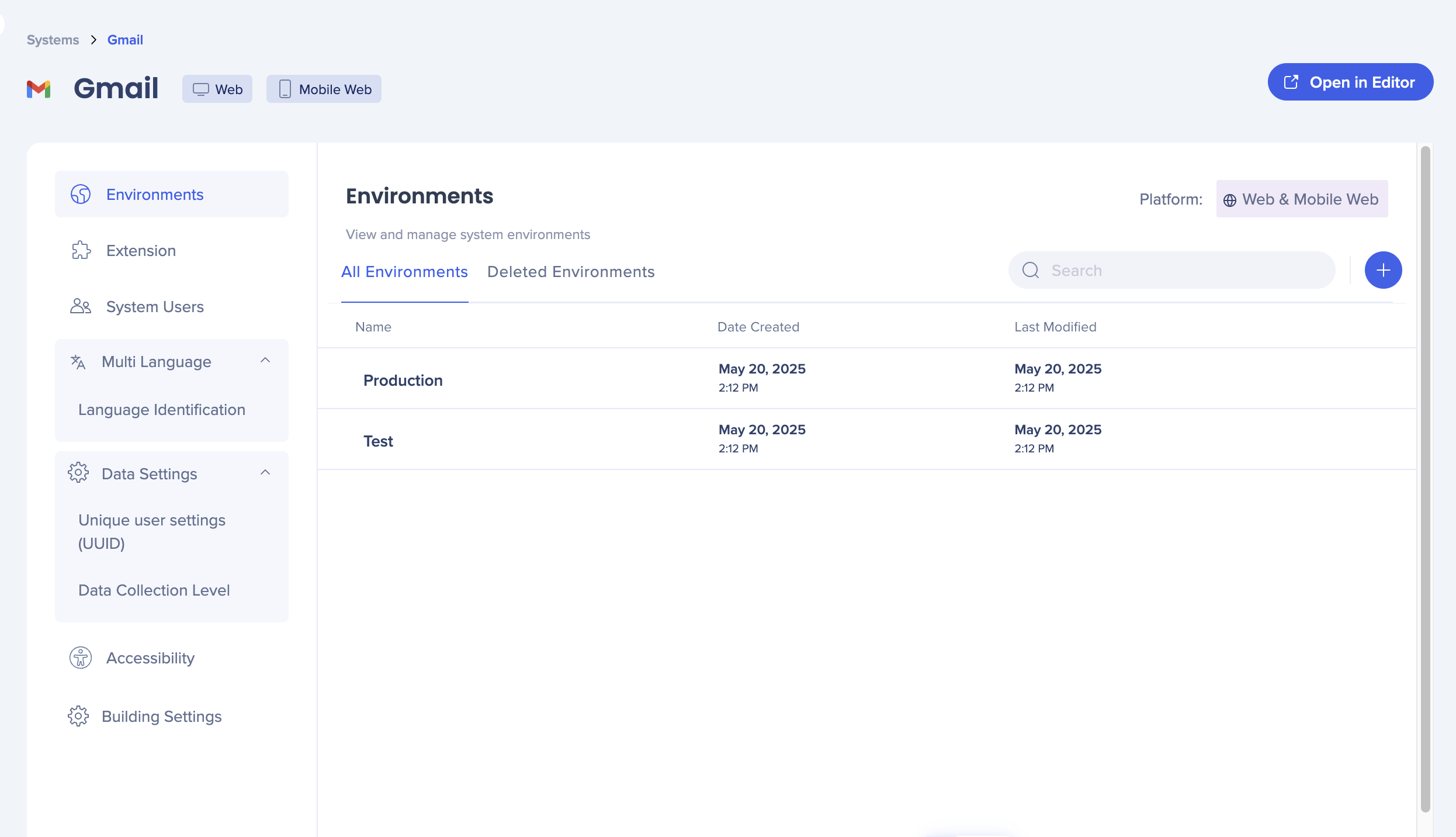
All environment management settings apply to both Web and Mobile Web platforms.
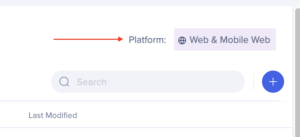
Click the blue + to create a custom environment
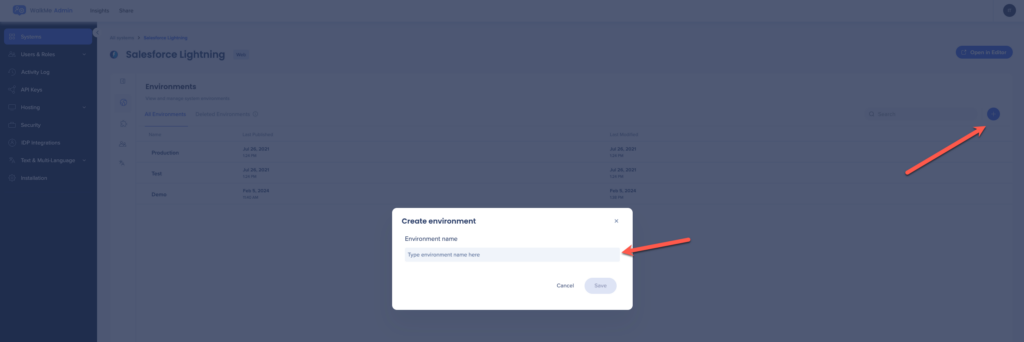
Two tabs display under User management. Users and Groups.
Users can be assigned to a group from the Groups tab.
This tab displays a list of all users assigned to work on the system.
Multi-Language
In the Multi-Language tab you can select how you want WalkMe to identify the site language.
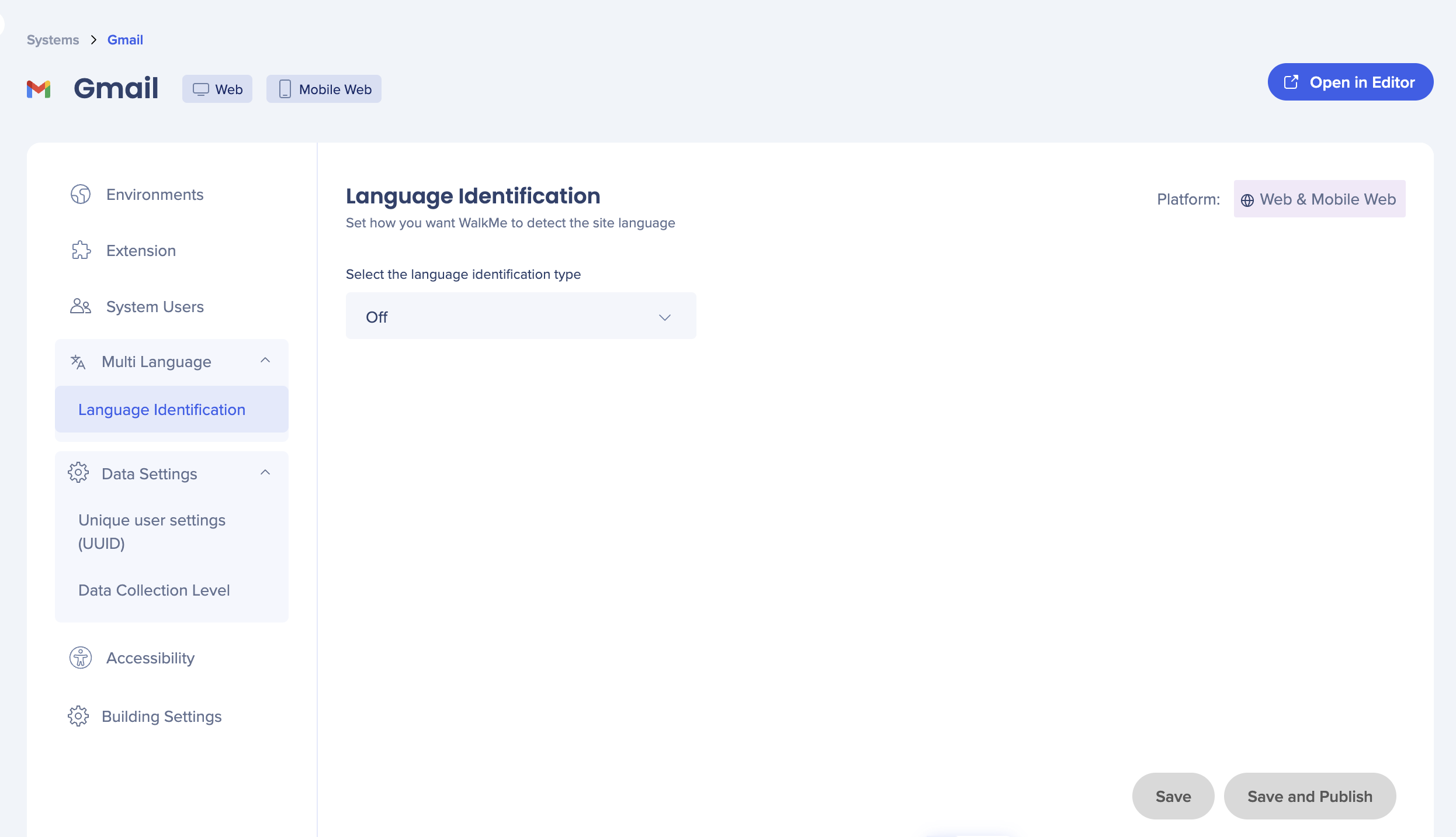
The available options are:
All settings under the Systems Users tab apply to both Web and Mobile Web platforms.

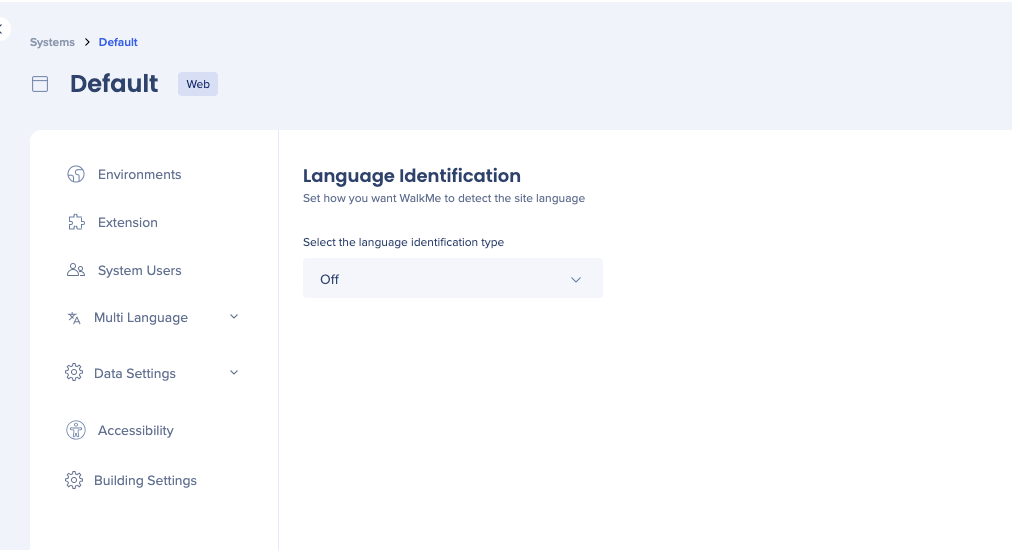
Set a UUID to define how you would like to collect data about your end users.
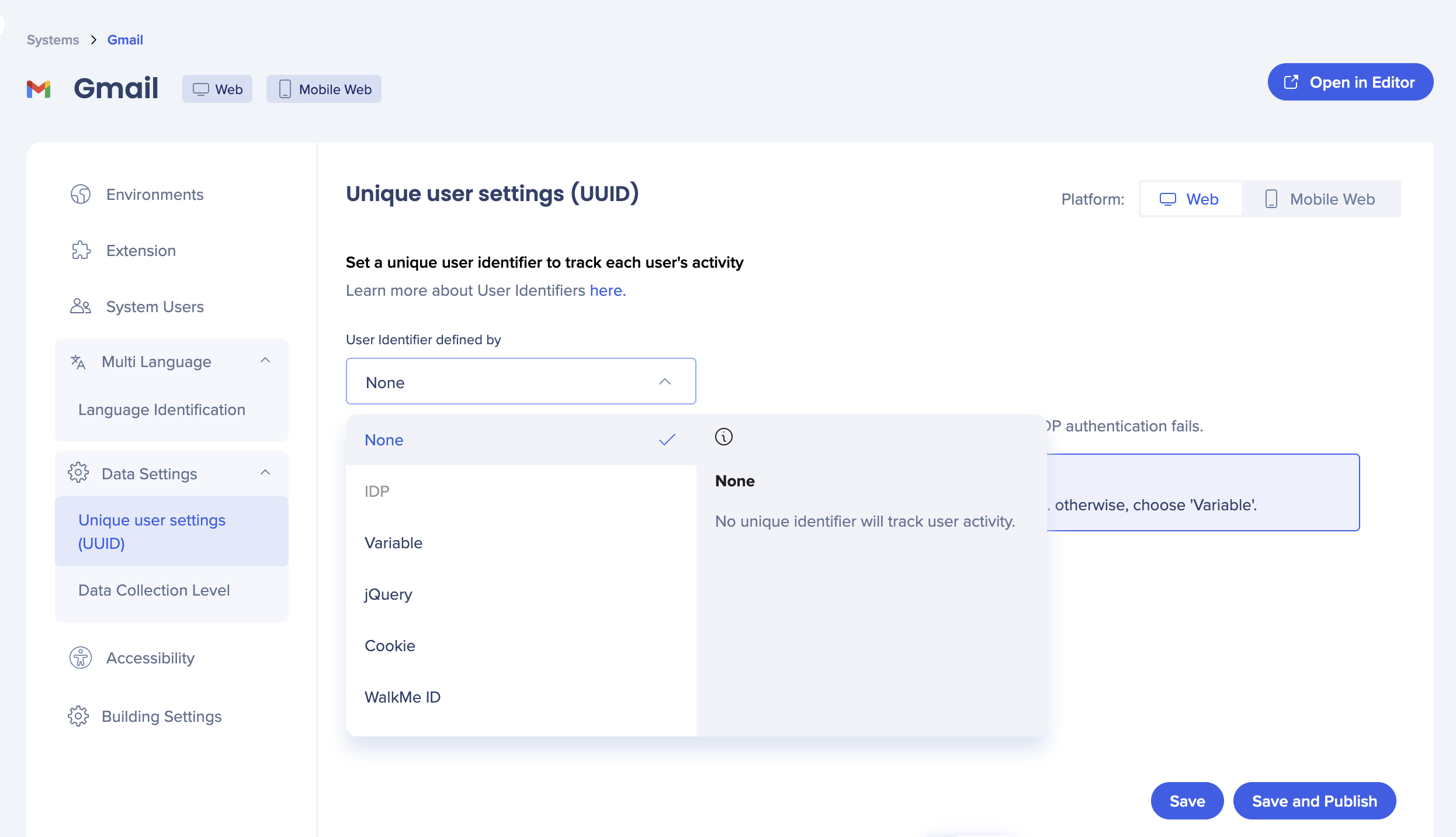
Unique User Settings (UUID) apply separately for Web and Mobile Web platforms.
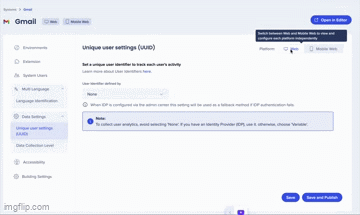
Select the level of data collection for WalkMe Insights
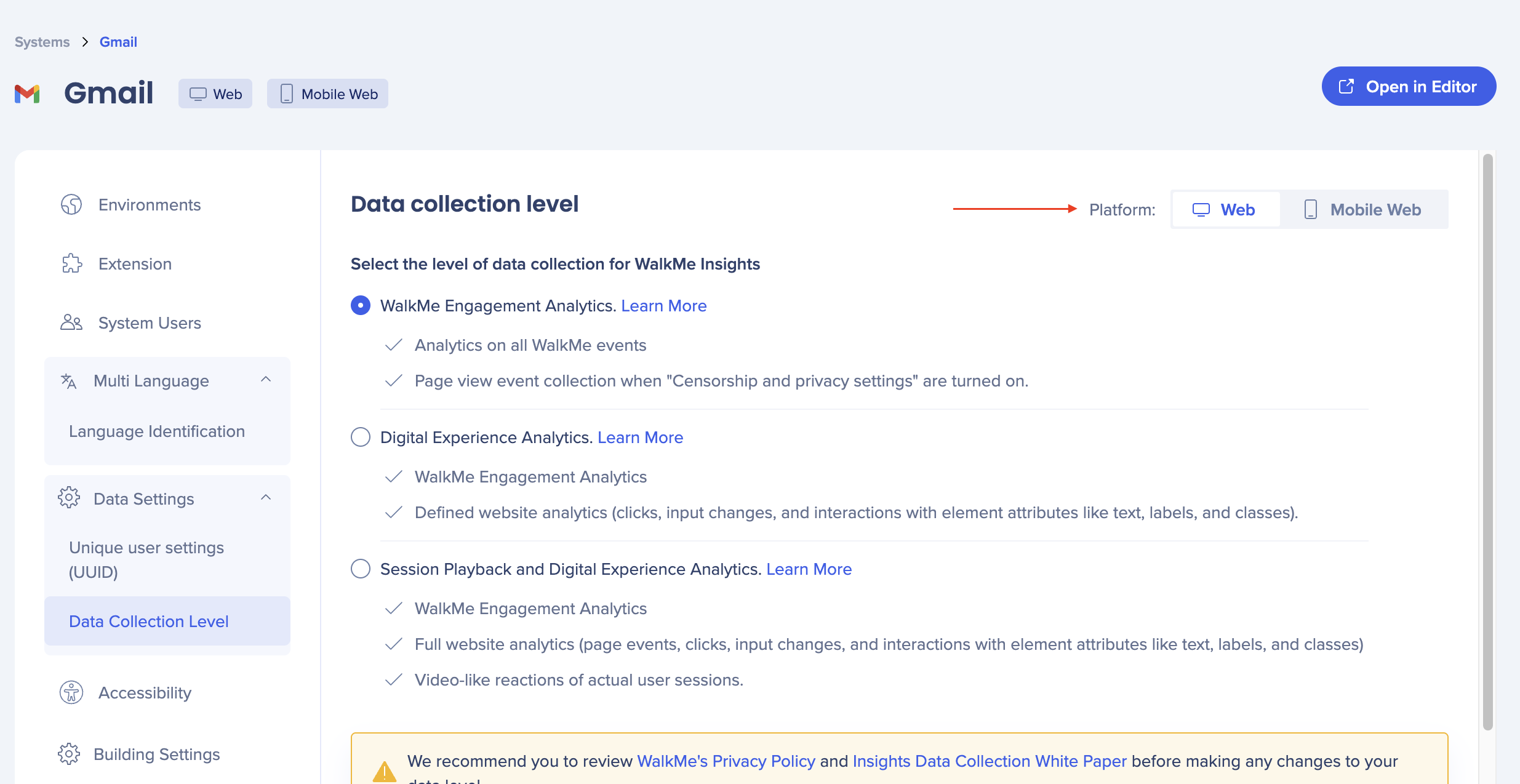
You can use the Accessibility tab to enable accessibility on the system or account level. Enabling it on the account level means that any new system created will have accessibility settings turned on by default, but won't affect any existing systems.
You can now have the option to enable accessibility on the system or account level
To enable the accessibility setting, turn ON the toggle
If you wish to enable accessibility for the entire account, meaning any new system created will have accessibility settings turned ON by default (not apply on already existing systems), check the relevant checkbox
If accessibility has been enabled at the account level by a WalkMe employee through http://backoffice.walkme.com , the toggle will be turned ON by default
There will be no option to turn it OFF independently; contact support if you want accessibility to be disabled
Accessibility settings apply separately for Web and Mobile Web platforms.

Building settings let you enable screenshot settings and theming for your system.
